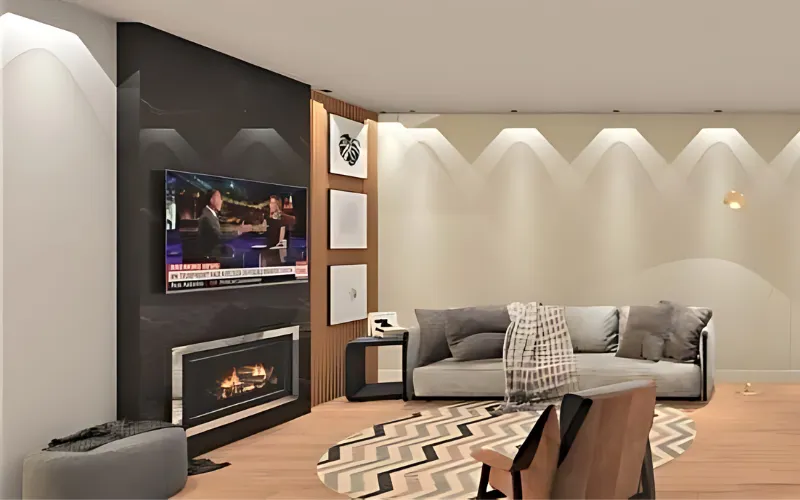A fireplace is a structure designed to contain fire and provide warmth and ambiance to a space. It can be an aesthetic and functional focal point in a living room, bedroom, or other space in the home. Here are some important aspects of fireplaces:
- Types of Fireplaces:
- Traditional Wood-Burning: Made of brick or stone, uses wood as fuel.
- Gas: Uses natural gas or propane, generally easier to light and control.
- Electric: Uses electricity, offers a chimney-free alternative and easy installation.
- Ethanol: Burns bioethanol, is portable and does not require a chimney.
- Pellet: Uses wood pellets as fuel, efficient and with automatic control.
- Common Materials:
- Brick: Traditional and durable.
- Natural Stone: Such as granite, marble or slate, for a more sophisticated look. – Metal: Steel or cast iron, usually in modern designs.
- Tile: For a decorative touch and easy to clean.
- Main Components:
- Chimney: To vent smoke and gases.
- Ventilation Duct: Required for gas and some electric fireplaces.
- Combustion Chamber: Where the fire is kept.
- Gable or Surround: Decorative area around the fireplace opening.
- Interior Finish: May include glass doors, protective screens, and fireplace hardware.
- Safety Considerations:
- Regular Maintenance: Chimney cleaning and inspection to prevent creosote buildup and fire hazards.
- Proper Ventilation: Especially for gas and ethanol fireplaces.
- Use of Doors or Screens: To prevent sparks from flying out and causing accidental fires. – Smoke and Carbon Monoxide Detector: Essential for indoor safety.
- Styles and Design:
- Rustic: Use of wood and stone for a cozy look.
- Modern: Clean lines, use of metal and glass.
- Classic: Ornate moldings and decorative details.
A well-chosen and maintained fireplace can add comfort, value and a pleasing aesthetic to a room.

